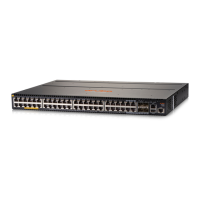Table 33 Technology Distance Specifications (continued)
Supported distancesMultimode fibermodal bandwidthSupported cable typeTechnology
2 - 26 meters160 MHz*kmmultimode fiber10-Gig SR
2 - 33 meters200 MHz*km
2 - 66 meters400 MHz*km
2 - 82 meters500 MHz*km
2 - 300 meters2000 MHz*km
0.5 - 100 meters400 MHz*kmmultimode fiber10-Gig LRM
0.5 - 220 meters500 MHz*km
2 - 10,000 metersN/Asingle mode fiber10-Gig LR
2 - 40,000 metersN/Asingle mode fiber10-Gig ER
2 - 100 meters2000 MHz*kmsingle mode fiber40-Gig SR4
2 - 150 meters4700 MHz*km
2 - 300 meters2000 MHz*kmmultimode fiber40-Gig ESR4
2 - 400 meters4700 MHz*km
2 - 10,000 metersN/Asingle mode fiber40-Gig LR4
1
Cat 5e cabling requires testing to 200 MHz operation and additionally for ANEXT and AELFEXT. The maximum
supported distances may be reduced depending on alien crosstalk levels. The support for untested cable installations
is best-effort.
2
Cat 6 cabling requires testing for ANEXT and AELFEXT. The maximum supported distances may be reduced
depending on alien crosstalk levels.
3
Cat 6 cabling requires TIA TSB-155A testing for 500 MHz operation and ANEXT.
4
For distances less than 20km, a 10dB attenuator must be used. For distances between 20km and 40km, a 5dB
attenuator must be used. Attenuators can be purchased from most cable vendors.
Mode Conditioning Patch Cord
The following information applies to installations in which multimode fiber-optic cables are
connected to a Gigabit-LX port or a 10-Gigabit LRM port. Multimode cable has a design
characteristic called “Differential Mode Delay”, which requires the transmission signals be
“conditioned” to compensate for the cable design and thus prevent resulting transmission errors.
Under certain circumstances, depending on the cable used and the lengths of the cable runs,
an external Mode Conditioning Patch Cord may need to be installed between the Gigait-LX or
10-Gigabit LRM transmitting device and the multimode network cable to provide the transmission
conditioning. If you experience a high number of transmission errors on those ports, usually CRC
or FCS errors, you may need to install one of these patch cords between the fiber-optic port in
your switch and your multimode fiber-optic network cabling, at both ends of the network link.
The patch cord consists of a short length of single mode fiber cable coupled to graded-index
multimode fiber cable on the transmit side, and only multimode cable on the receive side. The
section of single mode fiber is connected in such a way that it minimizes the effects of the
differential mode delay in the multimode cable.
88 Cabling and Technology Information

